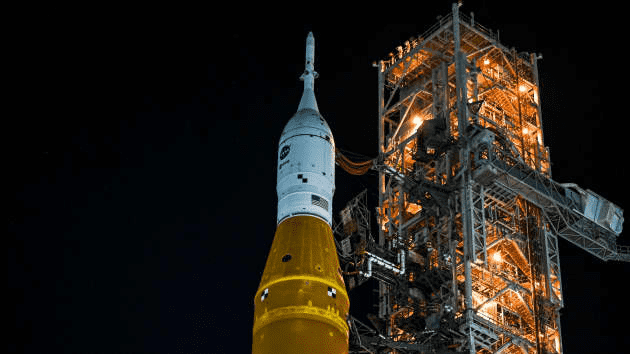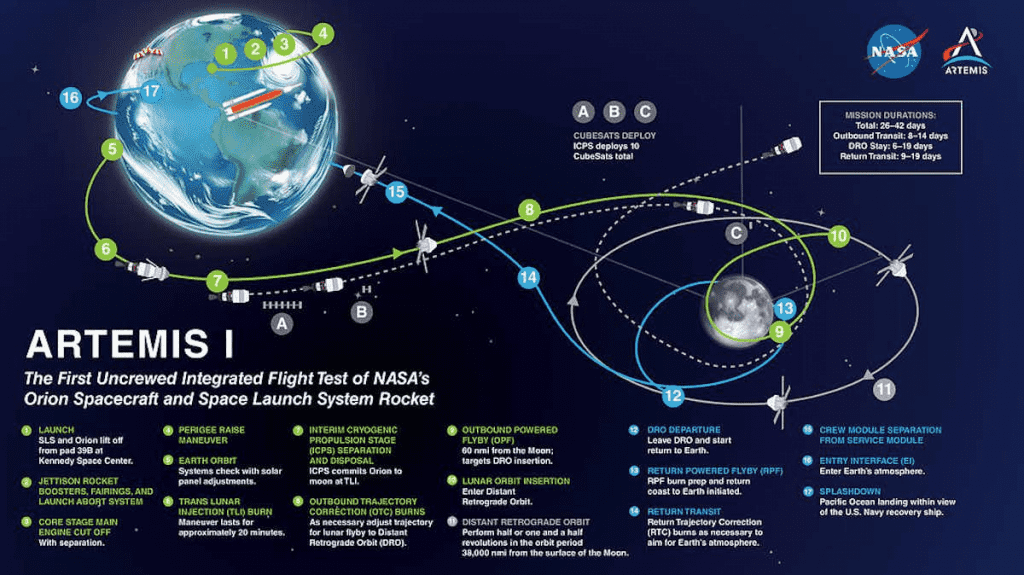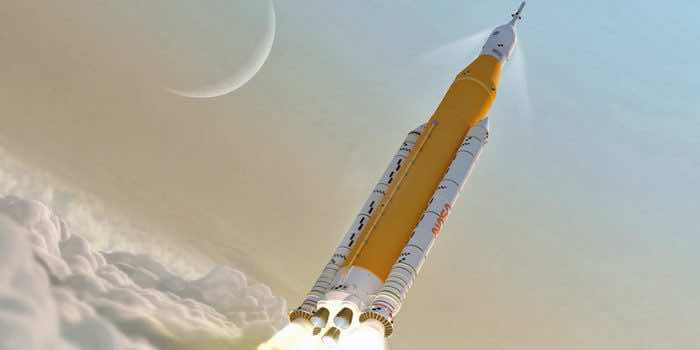The Artemis I mission, which will carry the Space Launch System (SLS) rocket and Orion spacecraft on a month-long voyage around the moon, will be launched by NASA today from Florida’s Kennedy Space Center.
The first uncrewed launch for NASA’s much-anticipated return to the moon’s surface also serves as the rocket’s world premiere. It’s the first mission in NASA’s Artemis lunar programme to put astronauts on the moon by 2025.
Even though Artemis I won’t transport people or touch down on the moon, the mission is significant in proving that NASA’s massive rocket and deep space capsule can operate as planned. Regarding NASA’s lunar objectives, Artemis I is a turning point. Despite the setbacks and the fact that it has taken up a significant chunk of NASA’s modest budget by federal agency standards, the Artemis programme has received much bipartisan political support.
Officials projected in 2012 that the SLS rocket would cost $6 billion to construct, debut in 2017, and cost $500 million each launch. However, the rocket is now making its debut, costing more than $20 billion to develop.

NASA’s auditor, the Inspector General, stated earlier this year that Artemis is not the “sustainable” moon mission that agency officials claim it is. The inspector discovered that more than $40 billion has already been spent on the programme and that NASA plans to spend $93 billion on it until 2025 when the first landing is scheduled.
However, even that 2025 deadline is in question, according to him. Moreover, he stated that the development technologies required to land on the moon’s surface will not be available until at least 2026.
NASA’s Artemis plan relies on the success of another monster rocket: SpaceX’s Starship. The agency last year awarded SpaceX with a $2.9 billion contract to develop a moon-specific version of the rocket to serve as the crew lunar lander for the Artemis III mission.
Boeing, Lockheed Martin, Northrop Grumman, Aerojet Rocketdyne, and Jacobs lead the effort to provide the hardware, infrastructure, and software for NASA’s Artemis I mission. According to NASA, the Artemis programme supports around 70,000 employees across the United States.
In addition to Kennedy as the launch site, other NASA facilities are engaged, including the DC headquarters, Marshall in Alabama, Stennis in Mississippi, Ames in California, and Langley in Virginia.
If technical concerns or bad weather prevent the Aug. 29 launch, NASA has prepared backup launch dates for Sept. 2 and Sept. 5.

The SLS rocket, which stands 322 feet tall, is a complicated vehicle built on the technology utilised and developed in NASA’s Space Shuttle and Apollo projects. SLS weighs 5.7 million pounds when fully fuelled and produces up to 8.8 million pounds of thrust, which is 15% greater than the Saturn V rockets of the past century. SLS employs four liquid-fueled RS-25 engines, which formerly flew on the Space Shuttle before being repaired and enhanced, and two solid rocket boosters.
The orange hue of SLS’s core stage comes from the thermal protection system that covers it, spray-on foam insulation. NASA is employing an SLS variant called Block 1 for the first three Artemis flights. After that, NASA intends to deploy a more powerful variant, Block 1B, on future flights.
NASA’s Orion capsule can carry four passengers on flights lasting up to 21 days without refuelling. The crew module, which is meant to withstand the extreme conditions of extended space flight, is at its heart. After launch, the European Service Module, constructed by the European Space Agency and contractor Airbus, fuels and propels Orion.
Three mannequins will use sensors within the Orion spacecraft for Artemis I to gather data on what astronauts will observe travelling to and from the moon. Orion’s return to Earth is remarkable since it will do it at a speed of about 25,000 miles per hour. A thermal shield shields Orion’s exterior, and two parachutes will slow it down for a splash landing in the ocean.

Artemis, I will travel about 1.3 million miles in 42 days. Then, the spacecraft will separate from SLS, after which it will perform a “trans-lunar injection,” departing from Earth’s orbit and travelling to the moon for multiple days.

Before Orion enters orbit around the moon, NASA plans to fly it as close to the surface as 60 miles. Then, Orion will use the moon’s gravity to help it set a path back into Earth’s orbit on its way back. A crew from NASA and the Department of Defense will recover Orion once it splashes down in the Pacific Ocean off San Diego, California coast.
Along with the mannequins on Orion, Artemis-I also transports a range of payloads, including cube satellites, technical demonstrations, and research experiments.


